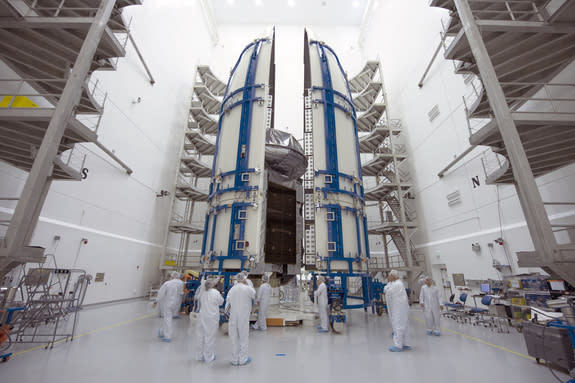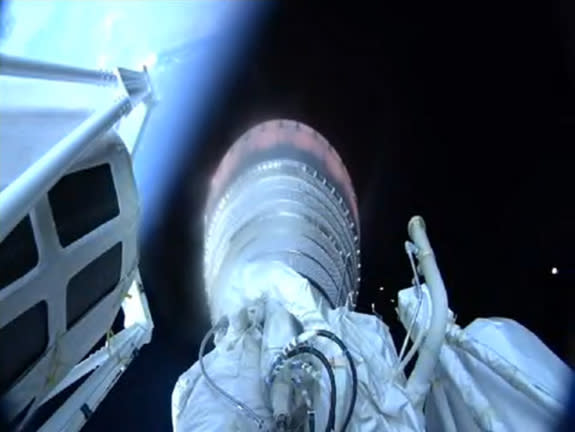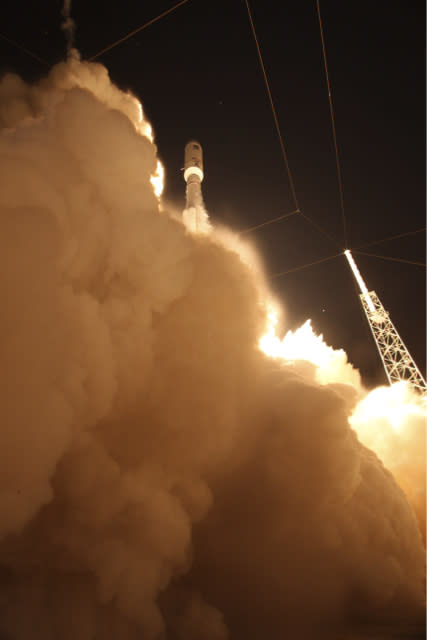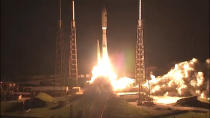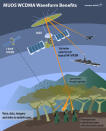US Military Launches Advanced Tactical Communications Satellite Into Orbit
The United States Navy launched an advanced new tactical communications satellite into orbit today (Sept. 2) to join a growing network designed to aid U.S. military forces stationed around the world.
An unmanned Atlas V rocket carrying the Navy's fourth Mobile User Objective System satellite, or MUOS-4, lit up the pre-dawn sky in a dazzling display as it lifted off from a launchpad at Florida's Cape Canaveral Air Force Station at 6:18 a.m. EDT (1018 GMT). It will eventually assume a geosynchronous orbit above Earth. The mission, which was overseen by the U.S. launch provider United Launch Alliance (ULA) was originally scheduled for Aug. 31, but delayed due to bad weather.
The satellite is the fourth installment in the MUOS communications system, which is "designed to significantly improve ground communications for U.S. forces on the move," according to a statement from Lockheed Martin, is building a total of five MUOS satellites for the U.S. military.
The first two MUOS satellites launched in 2012 and 2013. The third MUOS satellite launched in January and is still undergoing testing before it becomes fully operational.
"The MUOS works like a smartphone network in space, vastly improving secure satellite communications for mobile U.S. forces," Navy Commander Paul Benishek said in a ULA webcast just after liftoff.
MUOS is particularly helpful for troops in remote locations, because these soldiers can transmit and receive high-quality communications when the satellites are beyond the line of sight. All U.S. military services will be able to use the MUOS system, the statement said.
"MUOS provides satellite communications in the narrowband spectrum," the Navy statement said. "Although narrowband communication is less than 2 percent of total Department of Defense [DoD] bandwidth, it represents more than 50 percent of all DoD satellite communication users. In addition to ad-hoc situations such as disaster response, narrowband represents the majority of communications for SEAL teams."
This is the 56th launch of an Atlas V rocket by ULA since the rocket's debut in 2002. It is the sixth launch of an Atlas V rocket in the 551 configuration, which refers to the size of the payload capsule (5.4 meters or 17.7 feet wide), the number of solid rocket boosters (five) and the number of engines (one).
The next MUOS satellite, MUOS-5, is expected to launch in 2016.
Follow Calla Cofield @callacofield.Follow us @Spacedotcom, Facebook and Google+. Original article on Space.com.
Copyright 2015 SPACE.com, a Purch company. All rights reserved. This material may not be published, broadcast, rewritten or redistributed.

 Yahoo News
Yahoo News 
